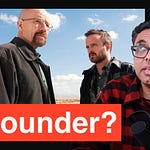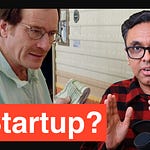Hey,
Waymo looks like the winner in self-driving.
It’s fully autonomous. Ultra-precise. Barely crashes.
But Waymo’s success is an illusion.
And Tesla is set to leapfrog them.
Not by building the best tech, but by deploying it the smartest.
Waymo is expanding city by city.
Its cars are packed with sensors. Each road is pre-mapped.
It’s safe, but slow and expensive.
Tesla is moving much faster.
They’ve already shipped over 500,000 semi-autonomous cars globally.
Those vehicles are collecting billions of real-world miles, training a system that learns on the fly.
No lidar.
No pre-mapping.
Just cameras, neural nets, and fast iteration.
Tesla sends out new software every few weeks.
The goal?
One update that turns millions of Teslas into robotaxis overnight.
Elon says they’re 2–3 years from making that happen.
But the deeper story isn’t just about Tesla’s strategy.
It’s the pattern — the same playbook Elon’s used for rockets, electric vehicles, AI, and now robotaxis.
Four founder lessons from Elon’s approach:
Solve problems in the right order: Elon always seems to ask: What’s the one constraint that, if solved, makes everything else easier? With self-driving, Elon didn’t start with full autonomy. He started by solving the real blocker: distribution. Deploy semi-autonomous cars first, then farm real-world training data at scale to improve the product.
Find the non-obvious solution to the obvious problem: If everyone agrees on an approach, Elon will almost always do the opposite. At SpaceX, the big barrier was cost. Most people assumed the solution was better spacecraft. But Elon bet on reusable rockets instead — and changed the economics of space entirely.
Build for tomorrow’s constraints: Elon doesn’t care about being right today. He cares about being right in the end. With EVs, he didn’t listen to early skeptics and wait for battery breakthroughs or charging networks. He built an electric sports car people wanted — then let infrastructure follow demand.
Turn users into advocates: This is a similar play to Airbnb and Uber: Build something people love and profit from, and they’ll fight to protect it. Elon’s version? He wants your Tesla to become your side hustle, earning money as a robotaxi while you sleep. Owners won't just want autonomy — they'll lobby for it.
Tesla’s robotaxi plan might be Elon’s biggest bet yet, and the one that proves the pattern works at global scale.
I break down the full strategy here:
Chapters
(00:35) Why Waymo seems unstoppable
(01:46) Tesla’s dropout advantage
(02:38) How Tesla hacked the liability problem
(03:20) The four-move checkmate to autonomy
(04:28) Your Tesla’s secret side hustle
(05:38) Elon’s genius failure formula
Transcript
Tesla has got a massive problem with its self-driving tech, but no one is talking about what happens when they fix this issue because Waymo success is an illusion. And Tesla is on track to leapfrog them with a strategy to deploy a fleet of Robotaxis in every city around the world, all within the next three years made possible by Elon's playbook. That's continuously defied the odds and skeptics.
First, let me introduce you to who everyone thinks is the market leader. Imagine you're in downtown San Francisco, you open an app, tap a button, and a car glides up. No driver, just empty seats waiting for you. That's Waymo. It started inside Google back in 2009. Today it's also live in cities like Austin and Phoenix.
Each car is a rolling super sensor, 29 cameras plus lidar and radar. It fires millions of laser pulses every second to build a 3D model of the street. It can see shapes, judge distances, and track movement faster than any human.
But the real magic isn't the hardware, it's the prem mapping. Before a single passenger steps in Waymo vans have already driven those same roads hundreds of times, recording every traffic light, curb, and road marking. When a Waymo robot taxi hits the road, it's not just reacting, it's cross-checking live data against a blueprint. It's like deja vu for robots. The results are hard to argue with. Waymo has only been at fault in one crash since launch. It's now handling 250,000 rides per week on paper. Waymo looks like it's already won the race, but the question isn't does it work? It's how fast can they take this global? That's where things get interesting.
In the opposite corner, there's Tesla, no lidar, no radar. Just nine cameras worth a thousand dollars. Instead of custom mapping cities,
Tesla's cars, figure it out on the fly. It's like dropping someone in Rome and telling them to drive. Tesla calls it vision-based ai.
It's a system relying only on cameras and neural nets to interpret the world. Unlike Waymo's cautious rollout, Tesla ships over there updates to users every few weeks. All while collecting billions of miles of real world footage.
At first glance, Waymo's Tech looks superior. Cameras have less rain than lidar. They struggle in rain fog or at night. To be fair, this isn't apples to apples. Waymo's are fully driverless. Teslas are still semi-autonomous, but that's the point. Waymo's a valedictorian who studied too hard. Tesla's a dropout who's already making money.
So how is Tesla getting away with it? The answer is liability hacking. Since Tesla's system is still semi-autonomous, it's classified as driver assistance.
That means the human behind the wheel is still legally responsible. If something goes wrong, it's your fault. Most of the time it's not Tesla. If Tesla had gone the Waymo route, they'd be on the hook for every crash. But by offloading liability to the driver with partial autonomy, Tesla gets to avoid approvals, delays, and lawsuits that's not just clever legal work. It's what unlocks Tesla's biggest advantage in ai, real world data at scale.
Waymo's launching like NASA, slow, precise, and expensive. Tesla's doing it like SpaceX, ship fast, then learn from failure.. Here's Tesla's four step strategy.
One, deploy semi-autonomous vehicles. There are already 500,000 on the road. Two, collect billions of miles of real world data. Three, train the AI on edge cases.
Lab testing. Can't replicate four. Flip the switch instantly upgrading the entire fleet overnight via software update. That's 6 million Teslas turned into fully autonomous vehicles.
Right now Tesla is deep into steps two and three, but step four won't happen until they hit an AI safety threshold. This is where governments agree. Tesla's AI is statistically safer than a human driver. Tesla estimates it'll take about 6 billion miles of data to clear that bar.
This year, a model Y delivered itself to a customer. The robotaxis went live in Austin, already covering more ground than Waymo's service. And their semi-autonomous fleet has logged 3.6 billion miles at this pace. They're two to three years away from flipping the switch and leaving everyone else behind.
But will the public trust Tesla's technology?
Elon's end game isn't owning a fleet. He wants you and your car to become the fleet. Tap a button and your Tesla joins. A pool of robo taxis making money while you sleep. Think Uber, but you don't have to drive the car.
It could turn every Tesla into an appreciating asset, justifying higher margins, pricing power, and long-term valuation..
This is Elon's master stroke. When autonomy arrives, millions of Tesla owners will have money riding on it. They'll advocate for regulatory approval, maybe not out of belief, but out of profit.. It's the same playbook. Uber and Airbnb used. Build something people love and earn from, then regulators will have little choice, but to legalize it, wall Street gets it. Tesla's $800 billion. Valuation assumes autonomy works. If it fails, that value disappears. But investors aren't just betting on autonomy, they're betting on a story they've already seen.
Tesla's Robotaxis strategy follows a pattern Elon has used before. Look at SpaceX critic said he couldn't build better rockets than nasa, but that was never the point. He made space exploration cheaper by creating reusable rockets.
After years of blowing them up and learning. SpaceX now handles 80% of the world's payload. It's the same with electric cars. Elon didn't care that batteries were weak or charging took too long. He bet that if he built a car, people want it, the infrastructure would follow demand. That's why Tesla started with a hundred thousand dollars sports car, not a budget sedan.
Elon's pattern is that his companies look like expensive failures until they suddenly work. His Robo Taxii strategy is the same play. Waymo might beat Tesla in precision, but Tesla's betting it can beat everyone in distribution. There are four things founders can learn from Elon's approach. One, solve problems in the right order. What's the constraint that if solved, makes everything else easier? Two, find a non-obvious solution to the obvious problem.
When everyone agrees on an approach, Elon does the opposite. Three, build for tomorrow's constraints. Elon doesn't care about being right today. He cares about being right in the end. Four, turn customers into advocates. When they love what you build, they'll fight for it. But most importantly, sometimes you just have to lock in, block out the noise and build.
Consensus creates comfort while conviction builds empires.
Hiten
=)
Hiten Shah is free today. But if you enjoyed this post, you can tell Hiten Shah that their writing is valuable by pledging a future subscription. You won't be charged unless they enable payments.









